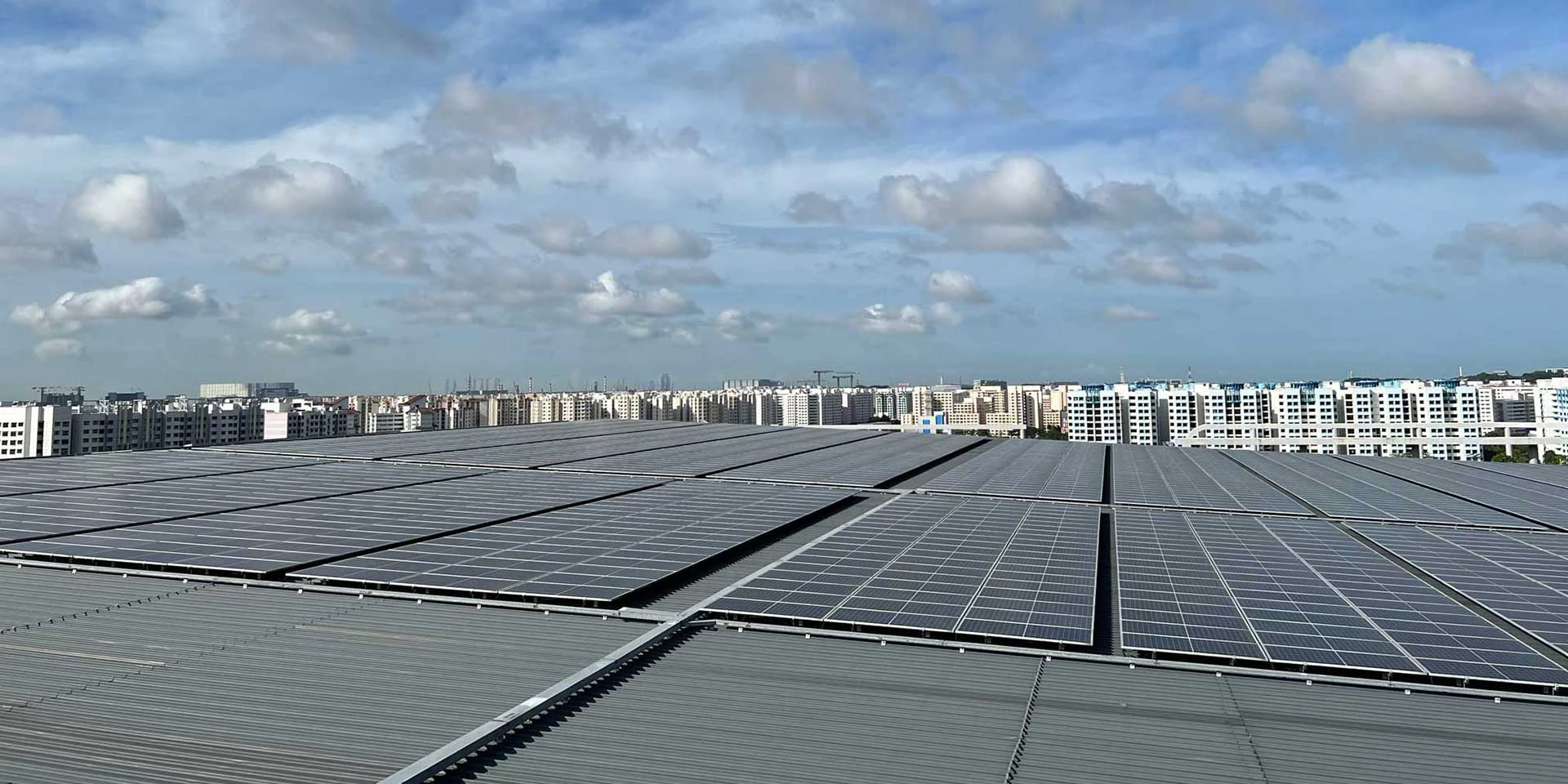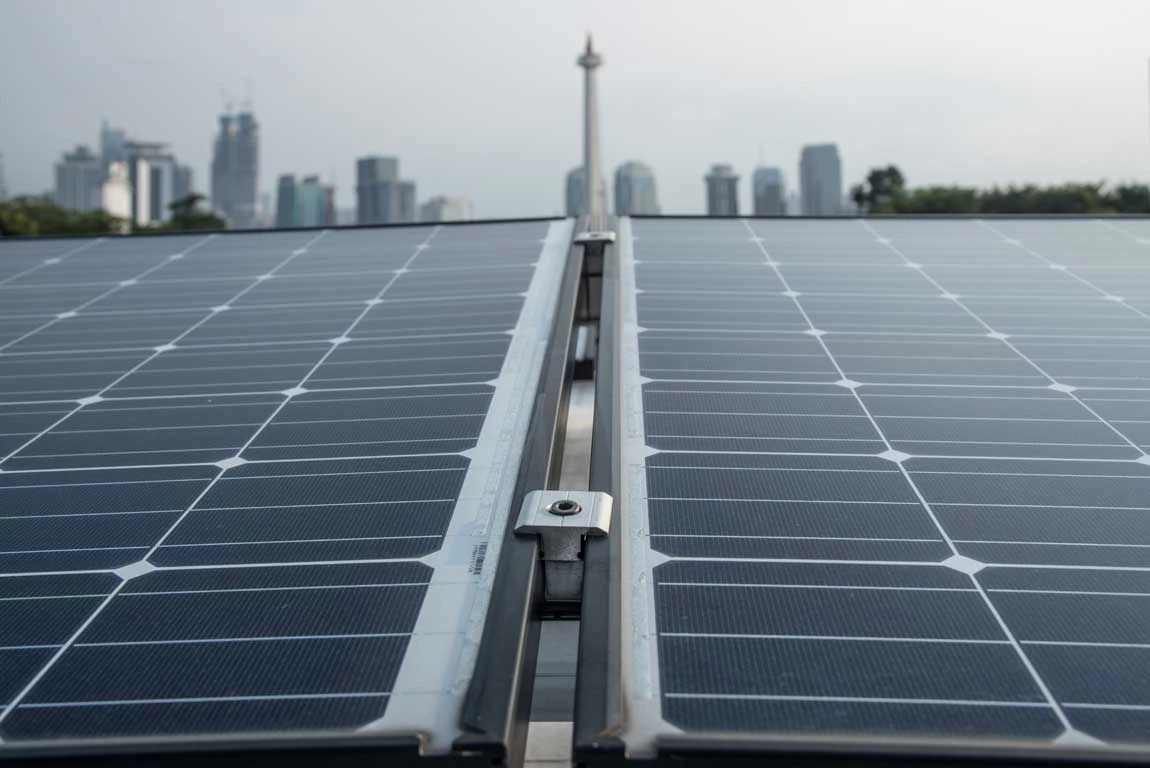By Alec Macfarlane
YCH Group, a logistics company headquartered in Singapore that aims to solve supply-chain challenges in the Asia-Pacific region for customers including Dell, Procter & Gamble, and Starbucks, has ambitions to become one of the world’s most sustainable infrastructure companies. It will soon use solar panels to power all the warehouses it has built in the last two decades, and it plans to electrify its entire transportation fleet by 2030.
“We want to leave the planet better for the next generation,” said Dr. Robert Yap, Executive Chairman of YCH. “It’s not just our company we’re focused on greening, but our supply chain, too.”
Decarbonizing infrastructure is a top priority in the race to meet the United Nations’ net-zero carbon emissions target by 2050. Current energy, transport, building, and water infrastructure produces more than 60 percent of global greenhouse-gas (GHG) emissions. Transport alone has the highest reliance on fossil fuels of any industry, accounting for 37 percent of carbon-dioxide emissions from end‐use sectors, according to the International Energy Agency. As a well-established company with nearly 70 years of experience, YCH has no problems accessing funding to finance its sustainable infrastructure projects in emerging markets. But not all its competitors are as fortunate.
As industry leaders, government officials, and financiers gather in Singapore this week for the Asia Infrastructure Forum, the question of how to scale up sustainable financing in emerging markets to meet ambitious climate pledges will be top of mind. Developing Asia needs to invest $1.7 trillion a year in infrastructure until 2030 to maintain its growth momentum, tackle poverty, and respond to climate change, according to the Asian Development Bank. Governments cannot finance this alone, especially with their current fiscal constraints resulting from the impacts of COVID-19, which has significantly slowed public investment in infrastructure as governments focus their limited resources on tackling the pandemic. The journey is further complicated by the war in Ukraine, concerns over energy security, and rising commodity prices, which have increased the urgency of the green transition.
However, the risks and challenges associated with investing in infrastructure in developing economies are difficult for many investors to absorb. As of the end of 2020, pension funds, insurers, and other non-bank financial intermediaries managed assets valued at $227 trillion, according to the Financial Stability Board. But institutional investors in OECD and G20 countries hold just $1 trillion of infrastructure assets, only 30 percent of which are classed as green. This suggests that while the capital is there, it isn’t being channeled into the markets and projects that need it most.
“We don’t see impediments in accessing sustainable finance,” said Audra Low, Chief Executive of Clifford Capital, a Singapore government-backed provider of structured and project finance solutions for Singapore-based infrastructure and maritime companies looking to expand overseas, including in emerging Asia. “There is a huge amount of liquidity chasing green projects. The problem is there isn’t a very robust pipeline of bankable projects in emerging Asia."
“Governments must also define what the transition pathway is for their country. They must be clear about their nationally determined contributions (or NDCs, the climate-action plans countries agree to follow under the Paris Agreement), and how their planned energy mix and infrastructure pipeline are aligned with those targets. Investors looking in are thinking about things like transition risk and stranded asset risk. How are you going to evaluate those without this information?"
India has also encouraged public-private partnerships (PPPs), particularly in solar generation, with standardized risk allocation and clear processes. The country is keen to replicate the success of its PPPs in transport – particularly in roads and solar generation – in other sectors, and it has published a National Infrastructure Pipeline to speed up the development of projects. India’s government is also monetizing value from revenue-generating, public infrastructure assets and using the proceeds to invest in existing and new infrastructure assets, a process known as “asset recycling”.
But a lot more work still needs to be done to build the sustainable-finance market that India needs. J M Baxi Group, a conglomerate based in Mumbai with business interests spanning marine services, ports and logistics, and technology, also has big ambitions to support the transition to a low-carbon economy, with plans to achieve carbon-neutral terminals, increase its use of renewable energy, and fully electrify its terminal operations. Managing Director Dhruv Kotak said that while the sustainable finance market is growing in India, many companies have yet to fully embrace it.

Dhruv Kotak, Managing Director of J M Baxi Group. Photo: J M Baxi Group
“Green financing competes with conventional financing, which is far more accessible because green bonds are far more expensive,” said Mr. Kotak. “Moreover, there is lack of clarity on the classification and performance parameters on the basis of which green finance is obtained and success determined, and there is no incentive like tax breaks for subscribers to make the extra effort to secure green bonds.
“The government needs to help businesses consider sustainable finance options and veer away from conventional loans through incentivization like tax rebates, which should be given on achieving clear sustainability defined targets, especially to smaller players to encourage a sector-wide evolution.
“Access to sustainable finance can also be eased by offering clarity on guidelines and frameworks, uncomplicating the process and getting all the various bodies involved and aligned. We need to have processes in place to measure impact by robust and mandatory reporting standards. To this effect, the regulatory landscape will have to evolve for these developments to take place.”
Still, governments across Asia cannot achieve their countries’ ambitious climate targets alone. Effective climate action requires jurisdictions, businesses, and banks across the region to make a concerted effort to create the sustainable infrastructure need to future-proof their societies.
Financial innovation will play a critical role in the transition. In India, for example, renewable energy companies have developed innovative models of financing their projects, where local funding is used to construct the assets. Once completed, those assets are then parceled up into large, diverse portfolios and presented to international investors as a package, a model that has assuaged investor fears over individual project risk and attracted billions of dollars in green bonds.
“This model can definitely be replicated in other Asian countries with local lending capacity,” said Ms. Low. “Of course, there are some countries in the region where even construction financing might be challenging from a domestic context. We’ll need to find other ways to solve for that.”

Audra Low, Chief Executive of Clifford Capital. Photo: Clifford Capital
Innovation in financial instruments is crucial, too. While the growth of the green bond market is undoubtedly a positive, financing only green projects will not take us to net-zero carbon emissions by 2050. We still depend on carbon-intensive infrastructure sub-sectors that require access to sustainable financing to support them in decarbonizing as they transition.
The advent of sustainability-linked finance, which links interest rates to the issuing company’s environmental, social, and governance performance, is a step in the right direction. The market now boasts $1.2 trillion of issuance since 2017, according to Bloomberg data, making it the world's fastest-growing type of sustainable debt. Sembcorp, an energy, and urban development company based in Singapore with operations in emerging markets across the region, recently issued a bond with performance targets tied to specific increases in its renewable energy capacity over the next ten years. If it fails to meet those targets, investors get a higher payout.
While nascent, infrastructure companies are also issuing sustainability-linked finance with social targets tied to their impact on the people they employ and the communities they affect. These innovative new instruments will be important in ensuring a just transition to net-zero emissions, as companies need to support workers in developing the skills needed to transition.
Blue finance is also emerging as an option for waste-management infrastructure companies to scale their operations, helping to divert plastic waste from the region’s rivers and oceans. Blended finance, where donor funds are combined with commercial or development financing to mitigate investment risks and rebalance the risk-reward profiles of investments, will also help create more bankable projects.
“Sustainable-infrastructure financing will need to come from both public and private sources if the Asia-Pacific region is to meet its climate targets,” said Ms. Chatterton. “The region is the world’s largest contributor to greenhouse gas emissions, is home to some of the world’s most vulnerable countries to climate change, and it is experiencing rapid urbanization.
“We are not investing quickly enough in the infrastructure needed to keep pace with these changes. This makes scaling up this market imperative, and financial institutions and development finance institutions such as IFC have a critical role to play in building the sustainable-finance ecosystem that the infrastructure sector needs. Our future depends on it.”
Published August 2022

